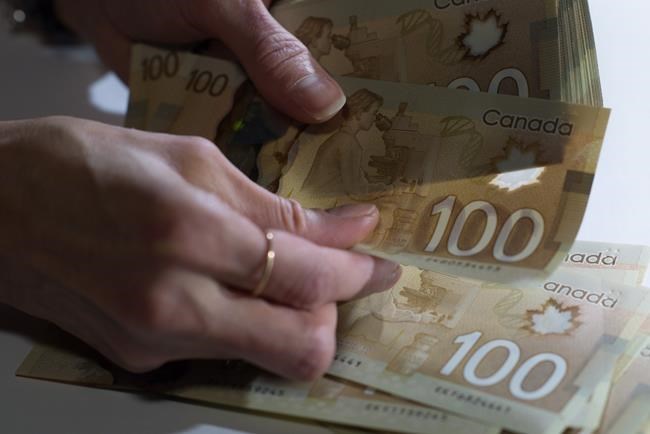TORONTO — Over the last decade, Todd Cocks has turned a series of misfortunes into money in his wallet.
There was the time hackers accessed his and millions of other PlayStation users' personal information, another when electronics manufacturers were accused of fixing computer monitor prices and the time his bank was charging hidden foreign exchange fees on currency conversions.
In each of these situations, Saskatoon-based Cocks applied for his share of the financial settlements offered in class-action lawsuits. Sometimes he made hundreds of dollars. Other times his earnings amounted to pocket change.
"It's like a hobby," he said.
"It gives you a tiny bit of money at some point ... but maybe, hopefully, it makes the companies want to behave a little more ethically because the penalties to them, I guess, can be relatively large."
Most lawyers agree deciding whether to seek compensation from class actions like Cocks regularly does is a personal decision best made after considering the paperwork involved and the chance that the sum received could amount to just a few dollars since the award is divided by everyone in the suit.
"Everybody will feel differently about it," said Josh Hanet, a Toronto-based partner at the Gowling WLG law firm.
"Some people may view (it as) only $5, 'But it's $5 that I deserve back.' Other people will say, 'Five dollars is just not worth the time and effort of filling out all these forms and going through this whole process."
Before deciding, lawyers urge Canadians to learn a bit about how they work.
Class actions usually begin with one person who has been harmed, bought a product or paid for a service that didn't perform as advertised coming forward to make a claim on behalf of anyone who had the same experience.
Class actions in Canada have addressed everything from the mistreatment of Indigenous peoples who attended residential schools to iPhones that had their performance deliberately slowed and even a co-ordinated effort between grocers to fix the price of bread.
Sometimes the harm that was caused may seem trivial but can be worth it to pursue as a group.
As an example, Hanet suggested imagining a razor company that advertises it will save shaving time but is later found to have no evidence to support the claim.
"A razor costs, what, five, 10, 20 bucks? No one in their right mind would sue a razor company for $20 because it’s going to cost them more to just file the claim," he said.
"But if thousands or tens of thousands of people have bought razors and everyone spent $5, perhaps it makes sense to bring a claim on behalf of all these people."
The first step after the claim gets filed is a motion to certify the case, which is when the court decides whether or not it's an appropriate claim to proceed as a class action, said Andrew Eckart, a staff lawyer at the Class Action Clinic, a University of Windsor-based organization assisting class action members.
If the court certifies the case, it continues to move forward, often resulting in a settlement where the person or company accused of wrongdoing offers compensation that is divided between anyone harmed by their actions who applies for their share of the cash.
Victims don’t have to accept their share of the cash and can fight for more, but they generally must opt out of the class action before a deadline set by the court.
For consumer product cases, Hanet said, "it would be, in my view, kind of silly to opt out of that sort of a settlement."
But there are instances where it makes sense to pursue a better deal.
Hanet and Eckart say when someone has suffered personal injury or damages from something like a medical device, pharmaceutical product or abuse at a school or workplace, you can sometimes be eligible for even more money when you pursue your case separate from a class action.
"The economics of it aren't as discouraging as if you're claiming for a $20 rebate," Hanet said. "You're claiming for hundreds of thousands of dollars or millions of dollars."
Class-action lawyers can help you determine which route is worth it for you, he said.
If you decide to accept your portion of the settlement rather than opting out and pursuing your own case, you'll usually have to turn in documentation like a receipt proving you bought a product or paid for a service that was the subject of the lawsuit.
In some instances, victims can sign a declaration swearing they bought the product in question or suffered harm instead of providing documentation.
For most of the class actions Cocks has been involved in, the application process has not been onerous. He usually had to fill out a quick form.
Then, the waiting game begins. It's taken months, even years, to receive his share of the settlement in some cases.
While he estimates he made about $300 from the bank that charged him hidden fees, most other class actions he joined netted him lower sums.
Still, he encourages others to pursue their share of class-action settlements.
"You're not going to get rich off of it, but when people are complaining about every little cent (and the cost of living) going up these days, it doesn't hurt to get an extra 10 bucks every once in a while," he said.
"Maybe it'll buy you coffee for a day or two."
This report by The Canadian Press was first published April 4, 2024.
Tara Deschamps, The Canadian Press




